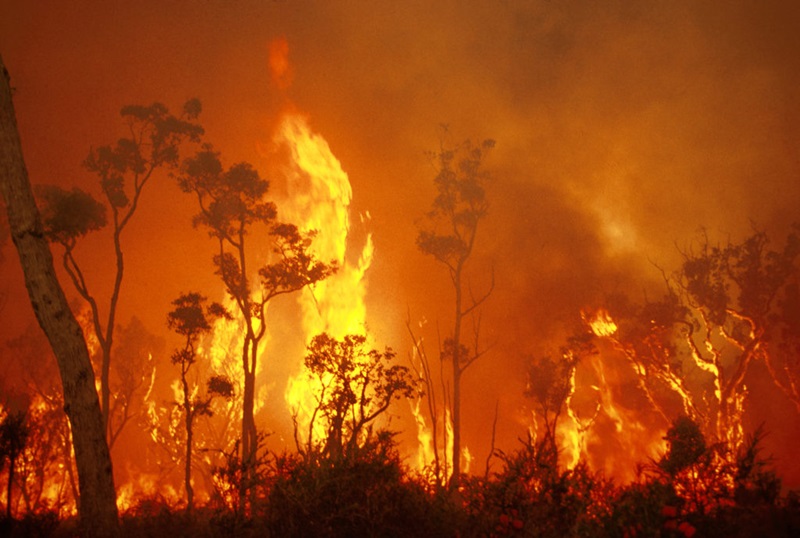Crafting Your Residential or commercial property's Security: A Detailed Bushfire Management Plan Overview
Crafting Your Residential or commercial property's Security: A Detailed Bushfire Management Plan Overview
Blog Article
Essential Tips for Bushfire Administration to Ensure Fire Protection

Understanding Bushfire Risk Levels
Understanding the differing degrees of bushfire danger is important for effective preparation and preparation in mitigating potential hazards to lives and properties. Bushfire threat degrees are typically classified based on factors such as weather, fuel availability, topography, and historic fire habits. By understanding these risk people, communities and levels can proactively apply methods to lower vulnerability and boost strength despite possible bushfire occasions.
The very first degree of bushfire risk is reduced risk, where the likelihood of a bushfire occurring and creating significant harm is marginal. Risky levels signify a considerable risk, with problems helpful to fast fire spread and extreme fire behavior.
Comprehending these bushfire danger levels allows stakeholders to tailor their preparedness and action actions as necessary, making sure a effective and proactive method to bushfire management.
Establishing a Defensible Space
Reliable bushfire management begins with developing a defensible space around buildings to improve protection versus possible fire threats. A defensible area is a buffer area that produces an obstacle in between a structure and the bordering flammable plants. This room works as a vital line of protection, giving firefighters a risk-free area to run and aiding to lower the risk of a fire infecting the residential property.
When creating a defensible room, it is crucial to think about the layout of the residential or commercial property and the bordering landscape. Clearing vegetation, particularly highly combustible plants, within a certain distance of the residential property can assist avoid the rapid spread of fires. In addition, preserving a well-irrigated area around the home can further boost its defensibility.
Routine upkeep of the defensible space is crucial to ensure its effectiveness. This consists of cutting overhanging branches, clearing dead plant life, and maintaining the area complimentary of particles. By investing effort and time into creating and keeping a defensible space, homeowner can substantially boost their chances of securing their homes and properties during a bushfire.
Executing Fireproof Landscaping
When creating landscapes to minimize the risk of bushfires, integrating fire-resistant aspects is crucial for boosting building security and decreasing fire hazards. Select plants with high dampness material, reduced oil web content, and marginal dead plants to decrease the threat of fire spread.

Developing an Emergency Discharge Plan
Creating a detailed emergency evacuation plan is essential for ensuring the safety and health of people during potential bushfire events (BAL Report). A reliable evacuation strategy need to describe clear treatments to follow in case of a bushfire threat, including marked discharge routes, setting up points, and communication methods
To begin creating an emergency discharge plan, it is necessary to examine the certain dangers and susceptabilities of your location. Determine numerous discharge courses that cause safe areas away from the fire, taking into consideration elements such as surface, road ease of access, and check that potential risks. Develop communication channels to alert locals of an approaching emptying, using techniques such as alarms, message signals, or door-to-door alerts.
On a regular basis testimonial and exercise the discharge strategy with all residents or community members to ensure every person recognizes their duties and responsibilities. Conduct drills to check the performance of the strategy and make any required adjustments. By having a well-prepared discharge strategy in position, you can improve the possibilities of a risk-free and organized discharge during a bushfire emergency.
Preserving Fire Safety Tools
After establishing a detailed emergency situation discharge prepare for bushfire incidents, it is vital to prioritize the regular upkeep of fire safety and security tools to make sure optimum capability and readiness. Regular maintenance of fire safety and security tools such as fire extinguishers, smoke detectors, smoke alarm, and automatic sprinkler is crucial in safeguarding lives and residential or commercial property throughout a bushfire. When required., carrying out routine inspections, testing, and maintenance of these tools by certified specialists is essential to assure they are in working order.
Fire extinguishers must be checked frequently for stress degrees, visible damages, and appropriate performance. By vigilantly preserving fire safety and security devices, people can improve their readiness and feedback capacities in the occasion of a bushfire.
Verdict
Finally, reliable bushfire administration involves comprehending risk degrees, developing defensible areas, executing fire-resistant landscape design, establishing emptying plans, and maintaining fire safety devices. By following these important pointers, people can guarantee better fire defense and security look these up for their communities and properties. It is crucial to prioritize aggressive procedures to reduce the risks connected with bushfires and to be gotten ready for emergency situations.
By comprehending the subtleties of bushfire danger degrees, establishing defensible spaces, implementing fireproof landscaping, developing detailed discharge plans, and guaranteeing the maintenance of fire security tools, individuals and communities can considerably bolster their durability against the ravages of wildfires - Bushfire Risk. These suggestions are not only essential for safeguarding against instant fire hazards yet additionally for fostering lasting fire security approaches that can make a substantial difference in the face of escalating bushfire threats
Risky degrees represent a substantial risk, with conditions favorable to fast fire spread and severe fire actions. Regular maintenance of fire security tools such as fire extinguishers, smoke detectors, fire alarms, and sprinkler systems is important in guarding lives and residential property throughout a bushfire.In verdict, reliable bushfire monitoring entails comprehending threat degrees, producing defensible areas, applying fireproof landscape design, establishing discharge strategies, and maintaining fire security tools.
Report this page